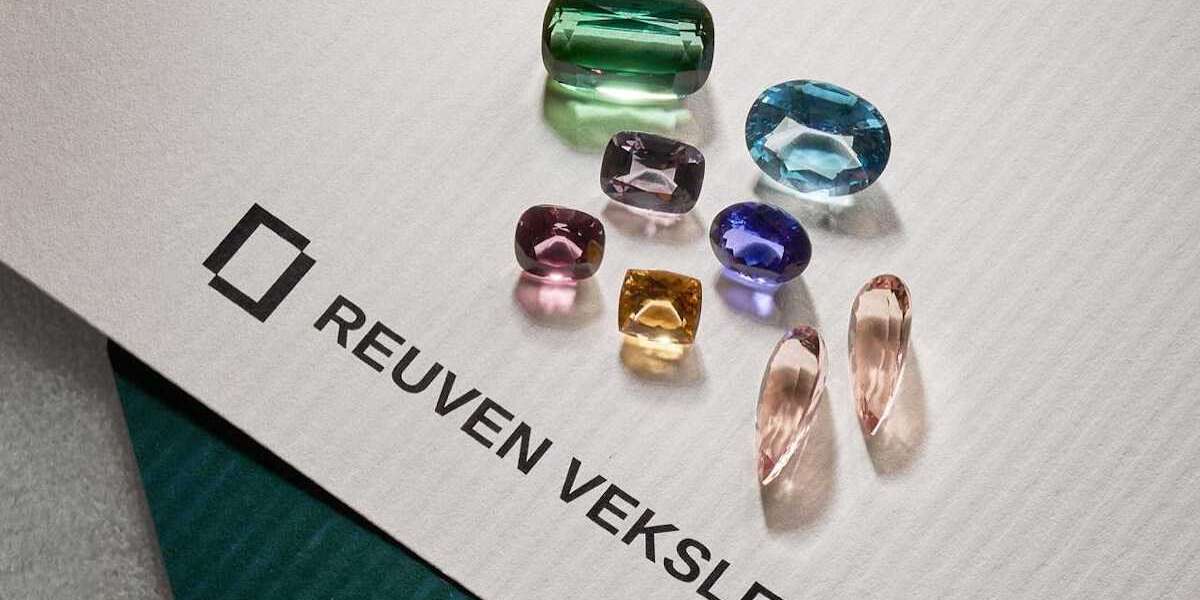Blue Zircon's Heat Secrets
Zircon stands among Earth's most ancient minerals, with some specimens dating back over 4.4 billion years, making it older than any known rock formation. This remarkable gemstone, composed of zirconium silicate (ZrSiO₄), should not be confused with synthetic cubic zirconia, an entirely different laboratory-created material that merely shares a similar name. Natural zircon possesses unique optical properties and geological significance that synthetic alternatives cannot replicate.
Blue zircon occupies a distinctive position in the gemstone market due to its exceptional brilliance and fire, which can rival that of diamond. However, most blue zircon available today does not occur naturally in this coveted color. The majority of brown and yellow zircon undergoes controlled heat treatment to achieve the striking blue hues that collectors prize.
Heat treatment serves as the key that unlocks zircon's hidden potential, transforming relatively common brownish stones into brilliant blue gems. This process, widely accepted in the jewelry industry, represents a fascinating intersection of geological science and gemological artistry. Understanding how heat reveals zircon's true colors provides valuable insight into both the stone's natural properties and the skilled craftsmanship required to bring out its best characteristics.
The Science Behind Blue Zircon Creation
Natural zircon typically displays brown, yellow, or reddish colors due to radiation damage accumulated over millions of years. Uranium and thorium naturally present in the crystal structure emit alpha particles that gradually disrupt the mineral's atomic arrangement, creating color centers and affecting the stone's optical properties. This radiation damage also makes untreated zircon appear less brilliant than its potential allows.
Scientific Fact: Research published in the American Mineralogist journal shows that zircon's crystal structure can be restored through heating, with temperatures between 900-1000°C proving most effective for color transformation.
The transformation process begins when controlled heating repairs the radiation-damaged crystal lattice. At temperatures around 900-1000°C, the disrupted atomic structure reorganizes itself, eliminating the color centers responsible for brown hues. This restructuring allows the stone's natural optical properties to emerge fully, creating the brilliant blue color that makes heated zircon so desirable. The heating process typically takes several hours and requires precise temperature control to avoid damaging the stone.
Heat treatment of zircon has become standard industry practice because it reliably produces beautiful results while working with the stone's natural properties rather than artificially altering them. The treatment is permanent and stable under normal wearing conditions, making it an accepted enhancement method recognized by major gemological institutes worldwide.
Key Research Finding: Studies conducted by the Gemological Institute of America demonstrate that properly heated zircon shows improved transparency and increased refractive index, directly contributing to its enhanced brilliance and fire.
During heating, zircon's chemical composition remains unchanged, but its crystal structure becomes more ordered and regular. This structural improvement reduces internal strain and increases the stone's optical clarity, allowing light to pass through more efficiently and creating the spectacular play of light that characterizes fine blue zircon.
Identifying Heat-Treated vs. Natural Blue Zircon
Heat-treated blue zircon displays specific gemological characteristics that distinguish it from untreated material. Heated stones typically show improved clarity and enhanced optical properties, with increased brilliance and fire compared to their natural counterparts. The treatment creates a more uniform color distribution and eliminates the haziness often present in radiation-damaged natural zircon.
Spectroscopic analysis provides the most reliable method for identifying heat treatment in blue zircon. Advanced techniques such as photoluminescence spectroscopy and absorption spectroscopy can detect structural changes caused by heating. These methods reveal differences in the crystal lattice organization and the presence or absence of radiation damage indicators.
Visual identification techniques include:
- Enhanced transparency and brilliance in heated stones
- More uniform color saturation throughout the gem
- Absence of the slightly cloudy appearance common in natural zircon
- Improved light return and scintillation
- Cleaner, more defined facet edges due to reduced internal strain
Industry standards require full disclosure of heat treatment in zircon. Major gemological laboratories, including GIA, SSEF, and Gübelin, routinely identify and report heat treatment on their certificates. This transparency ensures buyers understand exactly what they are purchasing and helps maintain market confidence.
Reputable dealers like Reuven Veksler maintain strict disclosure policies, providing detailed certificates that clearly indicate any treatments applied to their zircon specimens. This commitment to transparency builds trust with collectors and ensures compliance with international gemstone trading standards.
Investment and Collection Considerations
The gemstone market has fully embraced heat-treated blue zircon, with treated stones commanding strong prices and consistent demand. Heat treatment is so widely accepted that it has become the industry standard, with untreated blue zircon specimens being exceptionally rare. This market acceptance stems from the treatment's permanence and the dramatic improvement it provides in the stone's appearance.
Market Value Comparison: Natural blue zircon commands premium prices when available, often 3-5 times more than heated specimens of comparable quality, primarily due to extreme rarity rather than superior beauty.
Value differences between heated and natural blue zircon reflect rarity rather than quality. Heated stones often display superior optical properties and color consistency compared to their natural counterparts. The treatment's widespread acceptance means heated blue zircon maintains stable market values and represents excellent value for collectors seeking brilliant blue gemstones.
Heat treatment in zircon demonstrates remarkable stability over time. Unlike some gemstone treatments that may fade or deteriorate, properly heated zircon retains its color and optical properties indefinitely under normal conditions. The treatment creates permanent structural changes that cannot be reversed through normal wear or exposure to light.
Care Guidelines: Blue zircon requires standard gemstone care - avoid sudden temperature changes and protect from hard impacts. Clean with warm soapy water and soft brushes. Store separately to prevent scratching softer gems.
The treatment enhances rather than diminishes zircon's natural beauty, making it more accessible to collectors while preserving the stone's inherent characteristics. This accessibility has introduced more people to zircon's exceptional optical properties, contributing to growing appreciation for this undervalued gemstone in fine jewelry applications.
The Collector's Perspective: Beauty Beyond Treatment
Blue zircon's exceptional brilliance and fire stem from its high refractive index of 1.93-1.98, creating light performance that rivals diamond. This optical superiority, combined with strong dispersion of 0.039, produces spectacular flashes of color that make blue zircon one of the most brilliant natural gemstones available. The stone's ability to bend and split light creates an almost electric blue appearance that captivates collectors.
Historically, zircon has adorned jewelry for over 2,000 years, though blue varieties remained rare until heat treatment became widespread in the 20th century. Ancient civilizations prized zircon for its brilliance, and Victorian-era jewelers occasionally featured natural blue specimens in exceptional pieces. Today's heat treatment democratizes access to this beauty while preserving zircon's geological authenticity.
Heat treatment represents the key that unlocks zircon's dormant potential, revealing optical properties that radiation damage had concealed for millions of years. Expert collectors recommend focusing on well-cut stones with excellent clarity and strong color saturation, as these factors maximize zircon's natural light performance. Quality heated blue zircon offers exceptional value compared to other blue gemstones of similar beauty.
The future outlook for blue zircon appears increasingly positive as collectors recognize its unique combination of brilliance, rarity, and affordability. Growing appreciation for alternative gemstones and zircon's distinctive optical properties suggest this underappreciated stone may experience significant market growth as more collectors discover its remarkable characteristics.
Conclusion
Heat treatment of blue zircon represents a perfect harmony between geological science and gemological artistry. Rather than artificially altering the stone's fundamental nature, heating simply repairs millions of years of radiation damage, allowing zircon's true optical potential to emerge. This process transforms relatively common brown stones into spectacular blue gems that rival the brilliance of far more expensive alternatives.
The widespread acceptance of heat-treated blue zircon reflects both the treatment's permanence and the exceptional results it produces. For collectors and investors, heated blue zircon offers an opportunity to acquire a genuinely brilliant gemstone with remarkable optical properties at accessible prices. As appreciation for alternative gemstones continues to grow, blue zircon's unique combination of beauty, rarity, and value positions it as an increasingly attractive addition to serious gem collections.
Understanding the science behind blue zircon's transformation enhances appreciation for both the stone's natural properties and the skilled craftsmanship required to reveal its hidden beauty. Heat treatment doesn't diminish zircon's value—it unlocks the spectacular potential that nature had concealed, making this ancient mineral's true brilliance accessible to modern collectors.
Understanding Heat Treatment in Zircon Selection
The science behind blue zircon's heat treatment process outlined in this analysis provides essential knowledge for evaluating specimens and understanding the value differences between treated and natural stones. Recognizing how controlled heating transforms zircon's optical properties enables informed decisions when selecting stones based on treatment status, color intensity, and long-term stability considerations.
Reuven Veksler's zircon collection features specimens with full treatment disclosure and proper gemological certification, ensuring transparency about the enhancement processes that reveal zircon's spectacular optical potential. With expertise in identifying the structural improvements that heat treatment provides, the collection offers access to both heated blue zircons with enhanced brilliance and rare natural specimens that command premium values due to their geological authenticity.
Zircon Collection:
Loose Zircon Gemstones
https://reuvenveksler.com/gemstones/type-zircon/
By Color:
Loose Blue Zircon Gemstones
https://reuvenveksler.com/gemstones/color-blue/type-zircon/
By Cut Style:
Emerald Cut Zircon Gemstones
https://reuvenveksler.com/gemstones/shape-emerald/type-zircon/
By Carat Weight:
3 Carat Zircon Gemstones
https://reuvenveksler.com/gemstones/type-zircon/weight-3-0/








